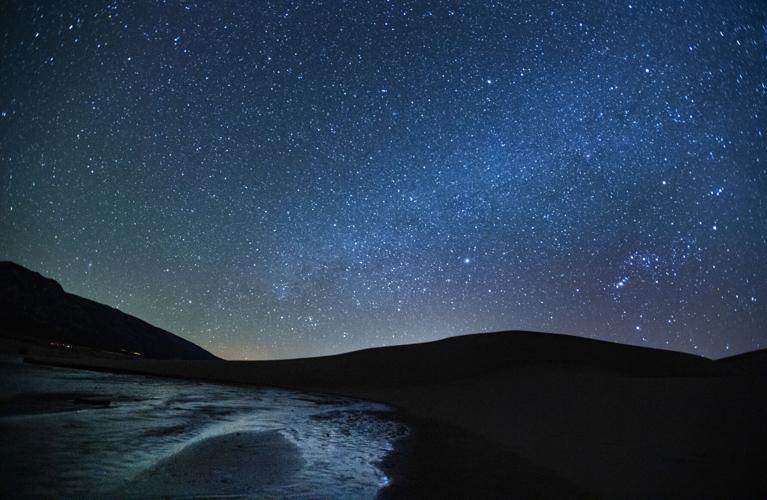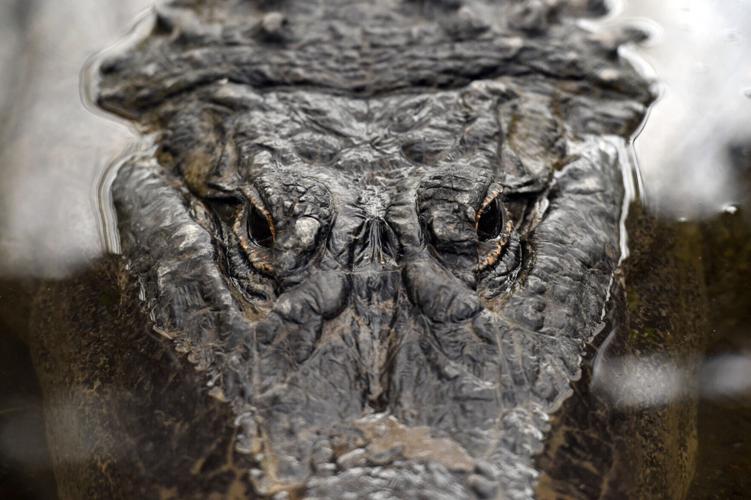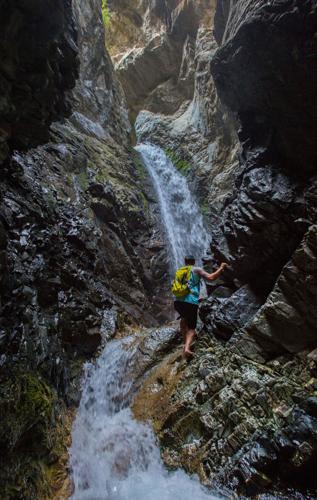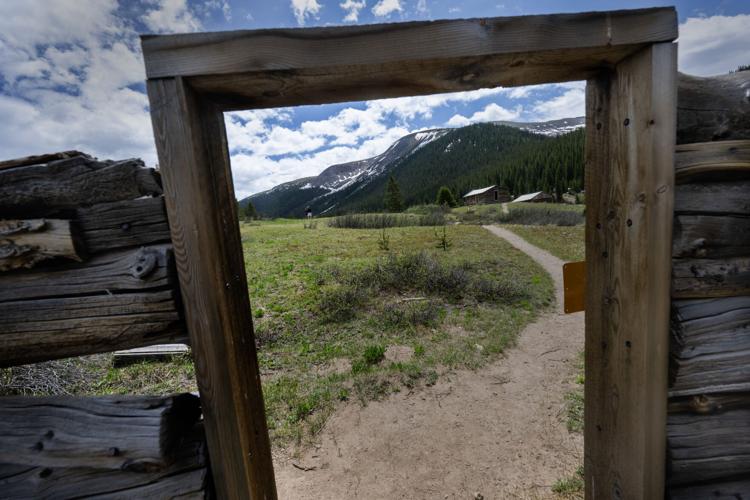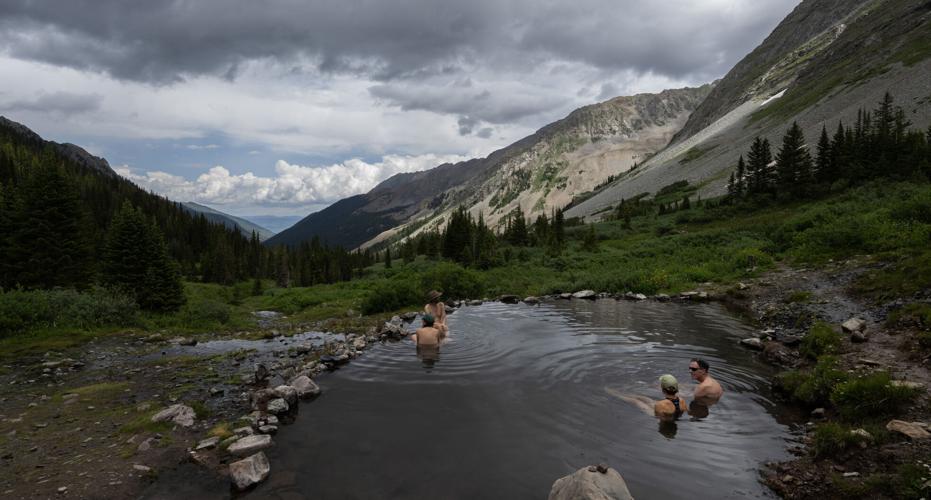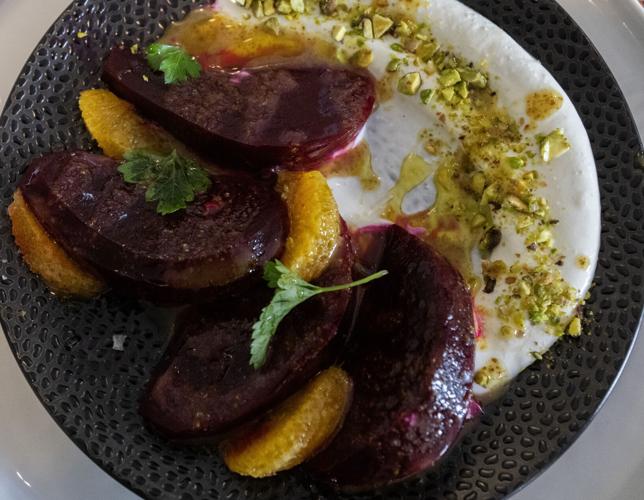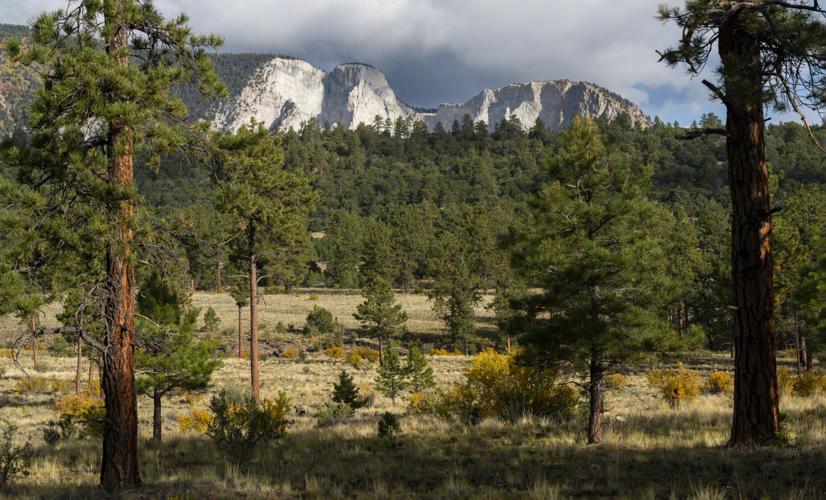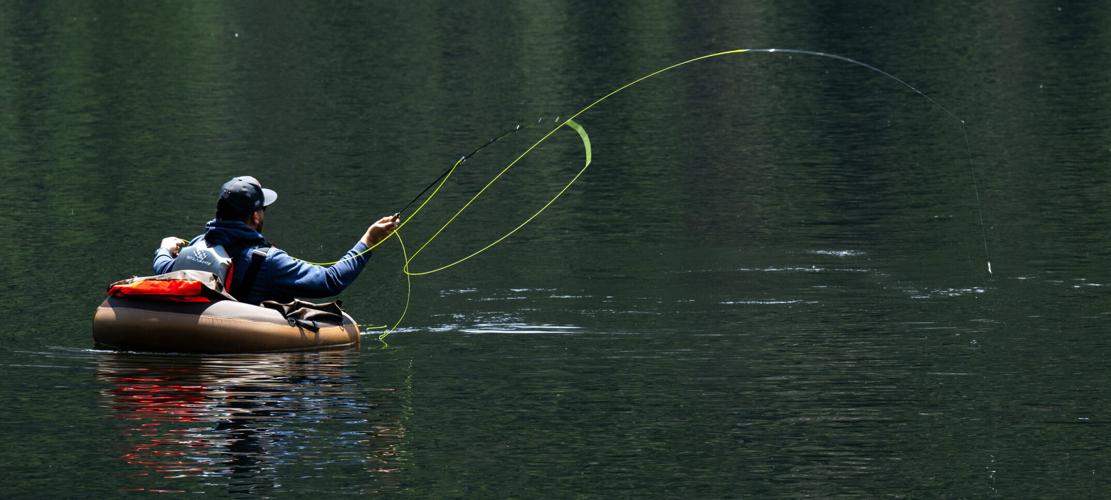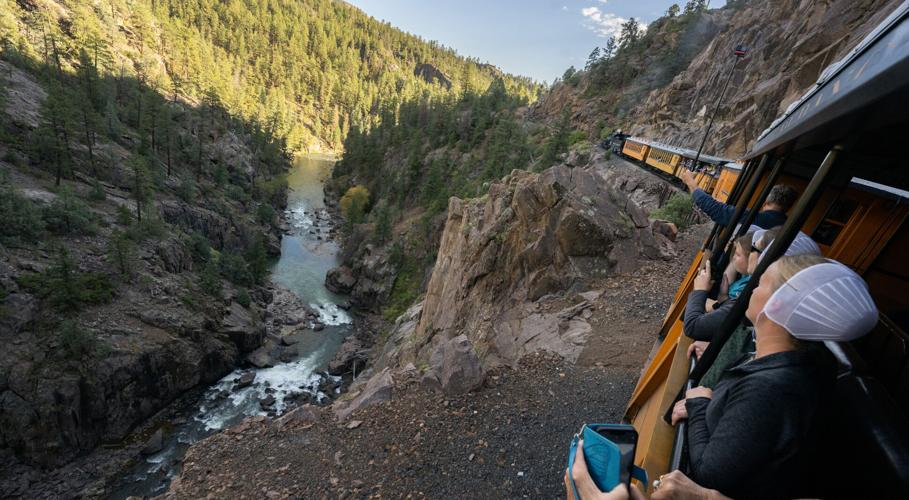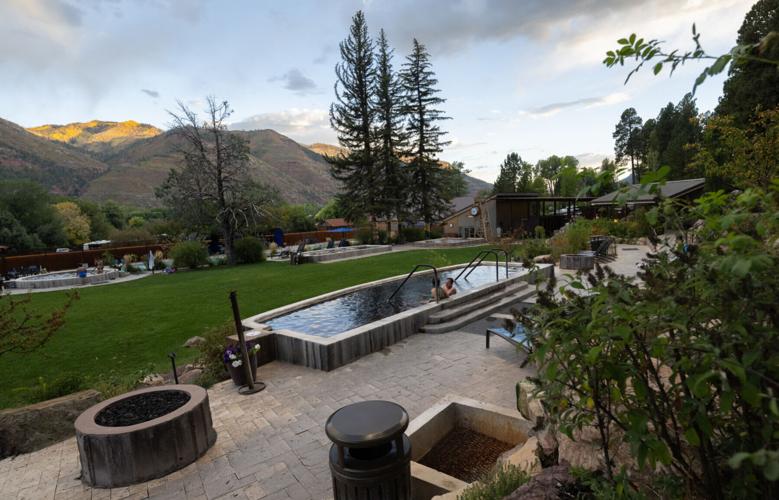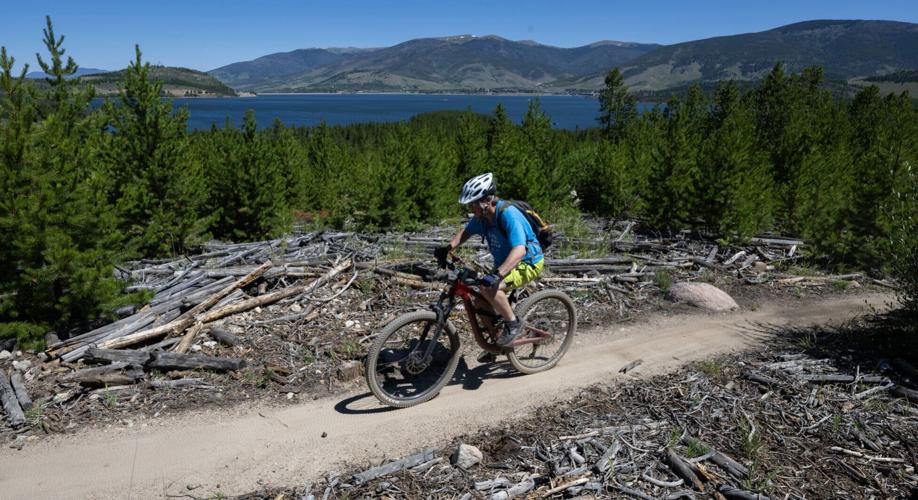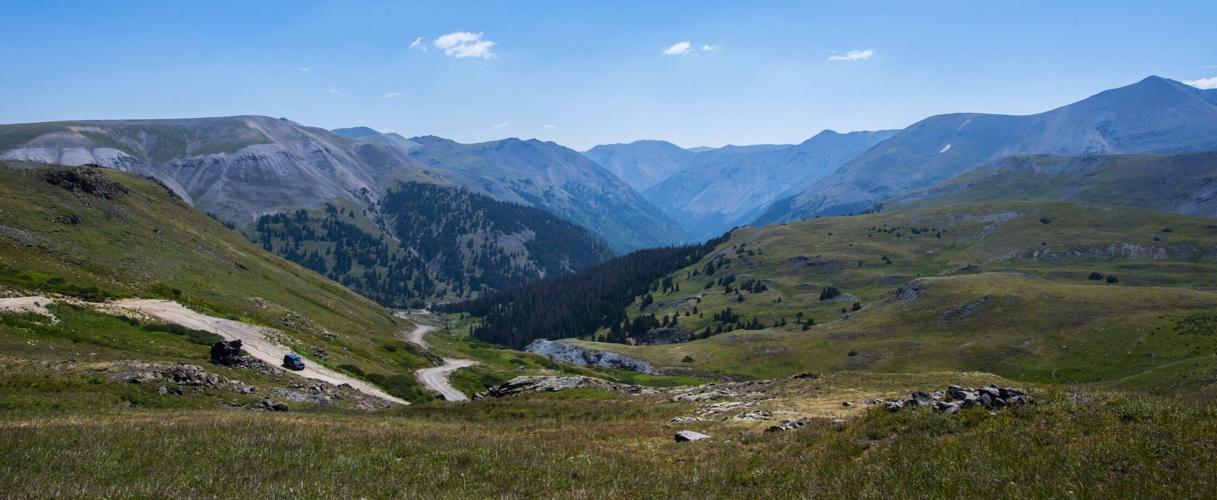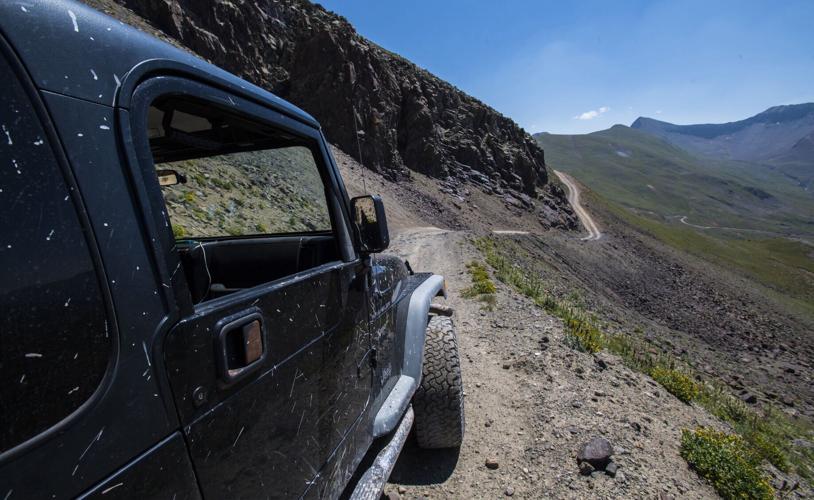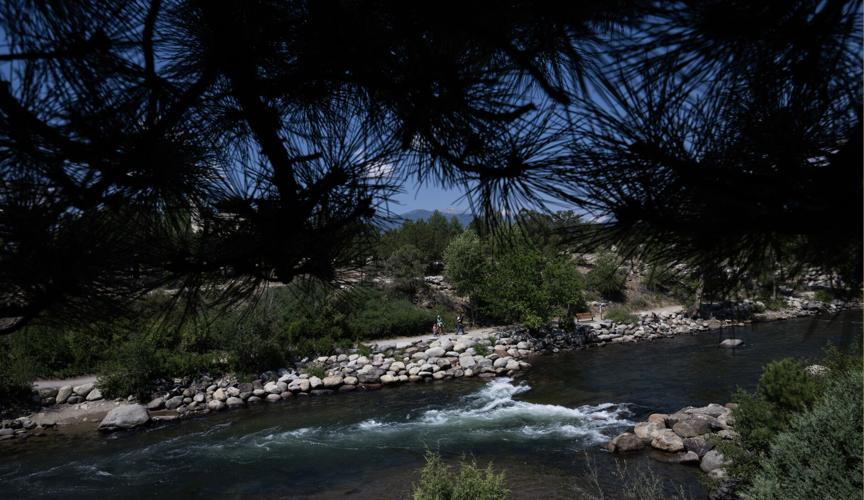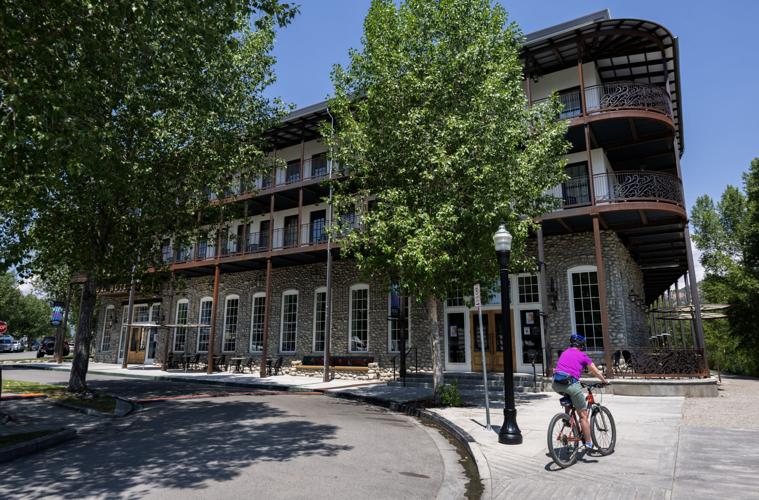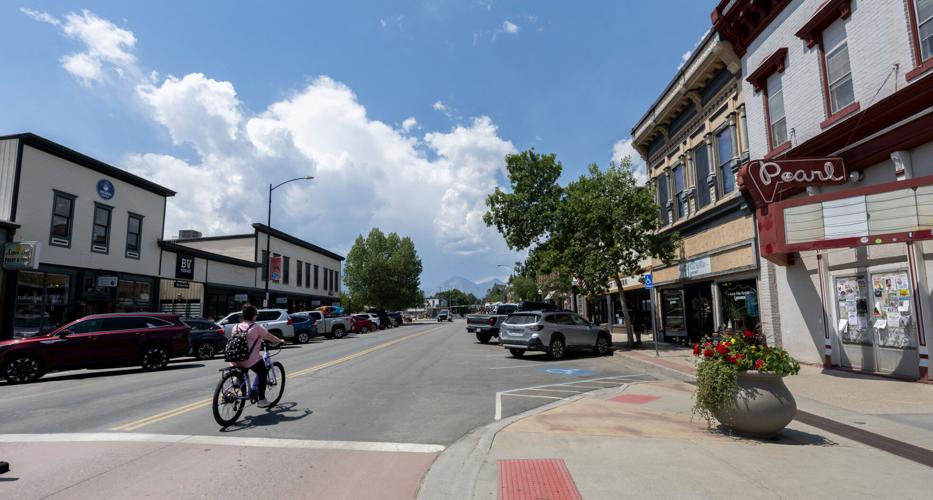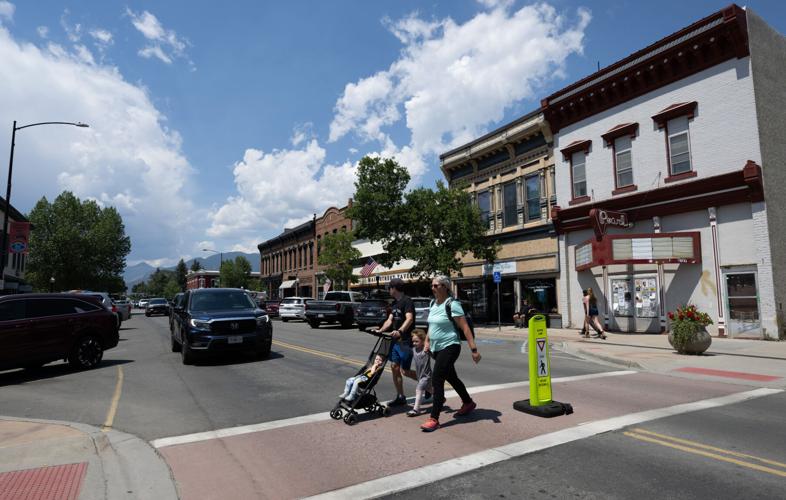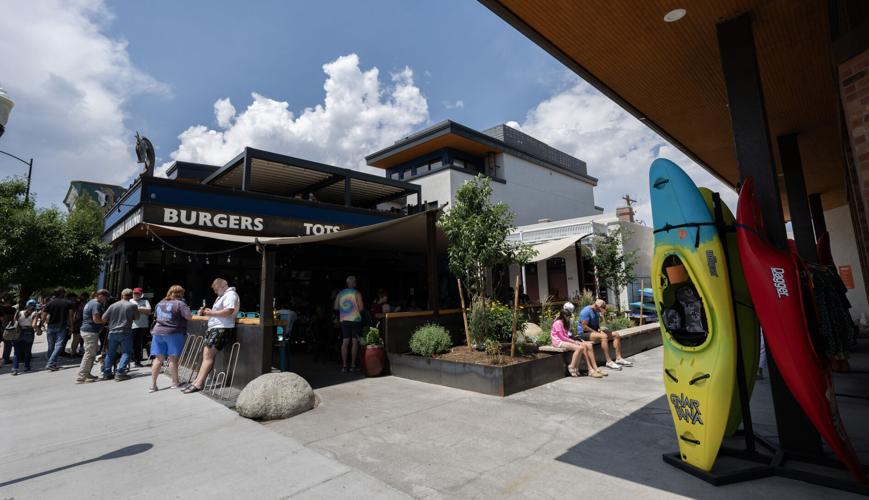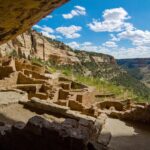Colorado’s 14er base camps: Where to climb and spoil yourself afterward
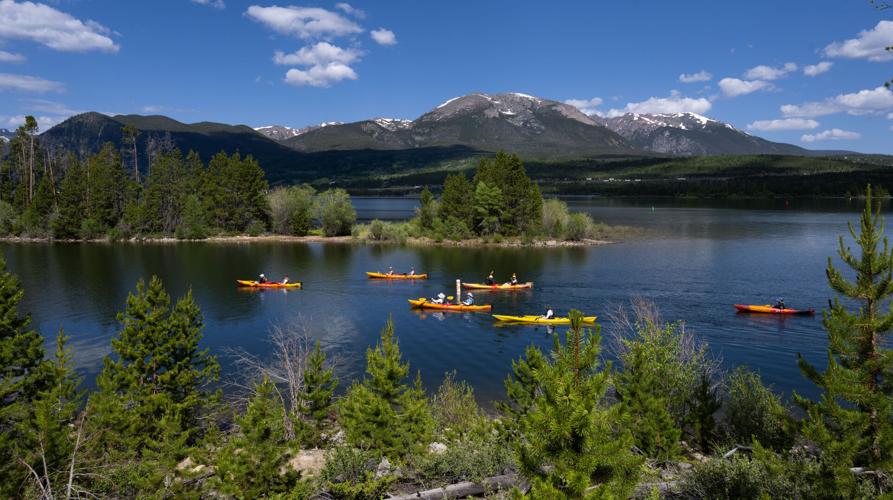
Christian Murdock, The Gazette
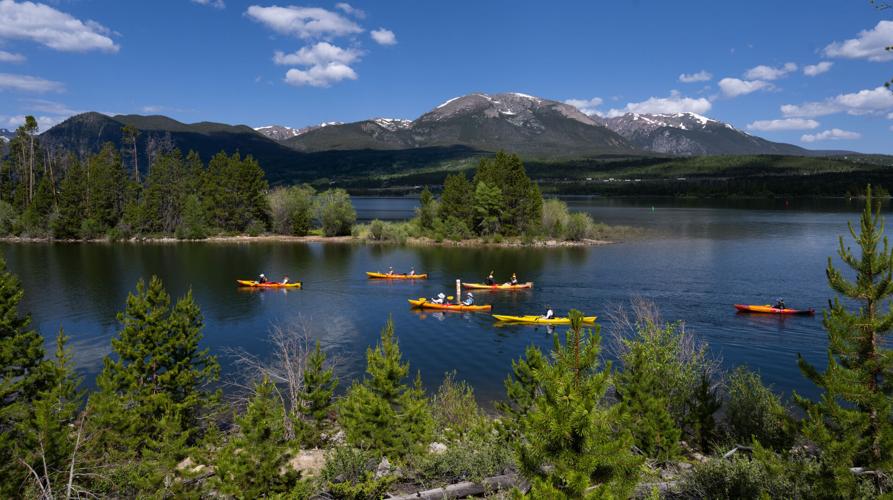
Kayakers glide across Dillon Reservoir Thursday, June 26, 2025, on a sunny summer morning in Summit County. The water behind the Dillon Dam, which is the largest water storage area for Denver Water, is a popular outdoor recreation area with ice fishing and snowmobiling in the winter, and water sports, hiking and bicycling in the summer. (The Gazette, Christian Murdock)
Christian Murdock, The Gazette
Snow has melted from Colorado’s high country. Consider it nature’s invitation to climb.
The state’s tallest summits await. So many to do. So little time.
The most avid climber needs a base camp, a place from which to attain multiple fourteeners. Here are some towns that come to mind, along with a few suggestions while you’re around.
Buena Vista
In reach: Antero, Belford, Columbia, Elbert, Harvard, Huron, La Plata, Massive, Missouri, Oxford, Princeton, Shavano, Tabeguache, Yale
One might choose Salida to the south or Leadville to the north, but Buena Vista is close enough in the middle while serving as the closest access to the Collegiate Peaks. There’s a reason why BV is home to the annual 14er Fest. It’s true: There might be no greater place to celebrate Colorado’s highest heights.
Overnighting: Among the most popular campgrounds are Cottonwood Lake and Chalk Creek. You might also look elsewhere along Cottonwood Pass, or check out reservable sites within Arkansas River Headwaters Recreation Area. Closer to Leadville, find Turquoise Lake and Twin Lakes (also very popular). Or spoil yourself at the riverside Surf Hotel or Mount Princeton Hot Springs Resort, with modern hotel rooms and cabins.
After the hike: Pizza and beer at Eddyline Brewery & Pub; Sweetie’s Sandwiches & Baked Excellence in Salida; High Mountain Pies in Leadville
What else to see and do: Catch a movie under the stars in a big field west of BV: Comanche Drive-In claims to be the highest drive-in theater in the U.S. About 20 miles away, St. Elmo is one of the state’s most accessible, most picturesque ghost towns.
Frisco
In reach: Bierstadt, Blue Sky, Democrat, Grays, Holy Cross, Lincoln, Sherman, Torreys, Quandary
For Colorado’s central peaks, Breckenridge might come to mind before Frisco; Breck is closer to Quandary, Sherman and the cluster defining the DeCaLiBron loop. But consider Frisco’s convenient location off Interstate 70, leading west to Holy Cross or east to Grays, Torreys, Bierstadt and Blue Sky. Plus, you can come back to the refreshing Dillon Reservoir.
Overnighting: There is a variety of reservable and first-come, first-served sites at these campgrounds along Dillon Reservoir: Peak One, Pine Cove, Heaton Bay, Lowry, Prospector and Windy Point. Among hotels, Frisco Inn and Frisco Lodge are situated near Main Street.
After the hike: Beer and Thai-inspired fried chicken at Outer Range Brewing Co.; chili or a burger at local staple Moose Jaw; elevated pub fare at historic Gold Pan Saloon in Breckenridge
What else to see and do: Check out the concert lineup at Dillon Amphitheater. The venue featuring views of the picturesque lake and surrounding mountains has risen to bucket-list status for music lovers.
Alamosa
In reach: Blanca, Challenger, Culebra, Ellingwood, Kit Carson, Lindsey, Little Bear
Alamosa is not popularly thought of as a base camp for fourteeners. And yet Alamosa is in the heart of the world’s largest alpine valley, the San Luis Valley. The Sangre de Cristo peaks await. And they are far from the only intrigues surrounding Alamosa.
Overnighting: The most enticing nights under the stars are at Great Sand Dunes National Park. Piñon Flats Campground is in high demand, as is Zapata Falls Campground. Outside the park, Sand Dunes Recreation books cabins and sites for tents and RVs — plus hot springs.
After the hike: Finer dining and cocktails in a historic, converted church at The Friar’s Fork; My Brothers Place for pizza; Calvillo’s Mexican Restaurant
What else to see and do: North America’s tallest sand dunes might be the second strangest destination in the San Luis Valley. The first might be Colorado Gators Reptile Park.
Aspen
In reach: Capitol, Castle, Conundrum, Maroon, North Maroon, Pyramid, Snowmass
Many come to Aspen for refined luxury. Others come for technical, challenging peaks. That’s the Elk Range, home to two of Colorado’s most photographed fourteeners: the Maroon Bells. Capitol Peak might be the most infamous. The Knife Edge to the summit is not for all. For the victorious, the rewards are endless in town.
Overnighting: For the Maroon Bells, you’ll have to clear logistics for shuttling or parking at Maroon Lake, on top of regulations within Maroon Bells-Snowmass Wilderness. Reservations are required for go-to campsites, including at Crater, Capitol and Snowmass lakes. Reservable sites are limited at Silver Bar, Silver Bell and Silver Queen campgrounds along Maroon Creek Road. Two top hotels in Aspen not to be missed are the historic Hotel Jerome and The Little Nell.
After the hike: Big Wrap for big, affordable sandwiches and smoothies; Hickory House Ribs & Steaks for no-fuss barbecue; for a splurge, globe-trotting cuisine at Mawa’s Kitchen
What else to see and do: Aspen Art Museum is a gem that’s free to explore. Two must-stops along Independence Pass, other than the top of the Continental Divide: the Grottos and Independence ghost town.
Lake City
In reach: Handies, Red Cloud, Sunshine, Uncompahgre, Wetterhorn
You won’t find urban spoils at this base camp, within a county considered the most remote in the Lower 48. You’ll find only natural splendor — arguably the finest in all of Colorado. You’ll want a high-clearance, four-wheel drive and know-how to cover the entirety of the Alpine Loop that accesses these San Juan summits, most of which are Class 1- and 2-friendly.
Overnighting: On its Alpine Loop web page, the Bureau of Land Management maps several dispersed campsites. Mill Creek Campground could be an option close to Red Cloud and Sunshine. There are also sites near Grizzly Gulch trailhead for Handies and near Nellie Creek trailhead for Uncompahgre and Wetterhorn. Back in town, there is Wupperman Campground and several cabin lodges.
After the hike: Packer Saloon and Cannibal Grill recalls the notorious, local legend; Southern Vittles for comfort classics; San Juan Soda Co. for a nostalgic treat
What else to see and do: Lake City gets its name for Lake San Cristobal, the state’s second largest natural lake. The shores offer a scenic rest after the climbing.
Durango
In reach: Eolus, North Eolus, Sunlight, Windom
The ideal base camp is actually not Durango, but rather Chicago Basin. Sure, you’ll want to snag a night back in the town of endless fun. But for the fourteeners, you’ll want a night or two in the remote basin. Making the adventure even more unforgettable: starting by train, the Durango & Silverton Narrow Gauge Railroad. From the Needleton stop, the trail runs six miles to Chicago Basin.
Overnighting: There’s backcountry camping around the basin. Back in Durango, Strater Hotel is the Victorian memory maker — a 138-year-old landmark that’s home to a Wild West-themed saloon, a fine dining restaurant and a cocktail lounge.
After the hike: James Ranch for farm-to-table burgers and more; pizza and beer in Olde Schoolhouse Cafe & Saloon; Gazpacho for Mexican
What else to see and do: Durango Hot Springs has redeveloped in a big way in recent years. The train to Silverton is especially sought in the fall for aspen colors.
Get OutThere
Signup today for free and be the first to get notified on new updates.





